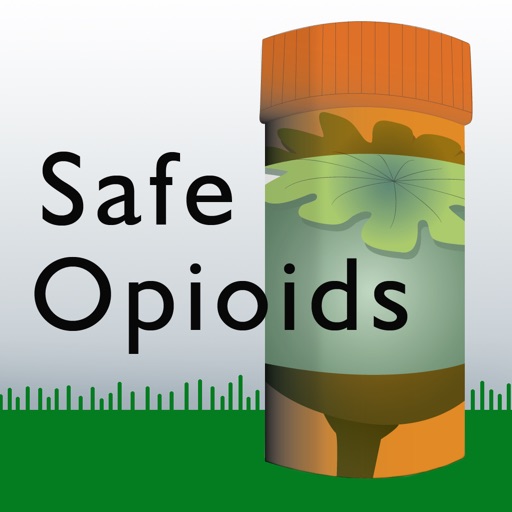Designing a Safe Opioid: Balancing Pain Relief and Risk Prevention
The opioid crisis has made the development of safer opioids more urgent than ever. These new formulations aim to provide adequate pain relief while reducing the risk of addiction, misuse, and overdose. Creating safe opioids involves advanced pharmacological innovations and careful ethical considerations to ensure a balance between individual pain management and public health goals.
Critical Strategies for Designing Safe Opioids
Developing safe opioids requires a multifaceted approach. One crucial strategy involves targeted delivery systems. Controlled-release formulations offer consistent pain relief and reduce the potential for misuse by limiting the quick onset of euphoric effects. Additionally, exploring alternatives to traditional oral opioids, such as intranasal or transdermal delivery systems, can offer pain relief with a lower risk of addiction.
Another critical area is molecular modifications. Adjusting the opioid’s molecular structure to retain its pain-relieving properties while limiting its impact on reward pathways can reduce the potential for addiction. Developing biased agonists—drugs that specifically target the opioid receptors responsible for pain relief—helps reduce euphoria and addiction risks.
Combination therapies are also promising. Pairing opioids with non-opioid medications like acetaminophen or NSAIDs enhances pain relief, allowing for lower doses of opioids. Another approach is combining opioids with medications like naloxone, which can block opioid effects if the drug is misused, reducing the risk of overdose.
Abuse-deterrent formulations help reduce misuse by incorporating physical or chemical barriers. Formulations that are difficult to crush, snort, or inject reduce the likelihood of misuse, while chemical deterrents that minimize the euphoric effects if tampered with, can further discourage abuse.
Additionally, enhanced monitoring is essential to prevent misuse. Prescription monitoring programs (PMPs) allow healthcare providers to track opioid prescriptions and identify potential misuse. Equally important is educating patients on the risks, benefits, and proper use of opioids, fostering responsible opioid use.
Finally, rigorous clinical trials and regulatory oversight are crucial. Comprehensive safety evaluations and long-term studies help ensure that new opioids are safe and effective. Regulatory bodies must ensure that safer opioids meet public health standards through adaptive frameworks and post-market surveillance.
The Benefits of Safe Opioids
Safe opioids provide an opportunity to address both the opioid crisis and the need for effective pain management. One of the primary advantages is reducing addiction, overdose, and misuse, directly contributing to efforts to mitigate the epidemic. For patients dealing with chronic or acute pain, safe opioids can offer effective relief while reducing the risk of developing a dependency.
Minimizing side effects is another critical benefit. Safe opioids can be designed to reduce adverse effects like constipation, sedation, and respiratory depression, which improves the patient’s overall quality of life. Additionally, fostering responsible opioid use can rebuild trust between healthcare providers and patients. Safe opioids encourage patients to adhere to prescribed treatment plans without the fear of addiction.
Advancing research and innovation is another outcome of the push toward safe opioids. Developing these new medications stimulates further research into pain management and new pharmacological approaches. This focus on safety encourages the exploration of non-opioid alternatives and complementary therapies.
Safe opioids also empower patients to make more informed decisions about their pain management, understanding the risks and benefits. This helps patients actively participate in their treatment and opens discussions around non-pharmacological pain management options.
Challenges and Disadvantages
Despite their potential, the development of safe opioids comes with challenges. Some formulations may not provide adequate pain relief for patients with complex or severe conditions, leaving some individuals without sufficient options. Additionally, the costs of developing safer opioids can be high, potentially limiting access due to increased pricing.
There are also regulatory challenges. Lengthy approval processes can delay the availability of these medications, and compliance with new regulatory standards can create administrative burdens for healthcare providers. Another potential problem is the risk of a false sense of security. Labeling a drug as “safe” might lead to less vigilance among patients and providers, with the misconception that these opioids are entirely risk-free.
Safe opioids, while helpful, may still be susceptible to misuse. Over-reliance on safer formulations could also shift focus away from the broader need for comprehensive addiction prevention and treatment strategies. Misuse of safer opioids can still occur, and addressing the social and behavioral factors contributing to addiction is essential to the overall solution.
Ethical Considerations
The development and use of safe opioids raise several ethical dilemmas. One of the most prominent issues is balancing patient autonomy with the responsibility to prevent addiction. While patients have the right to choose their pain management options, healthcare providers must ensure that these choices do not lead to harm, such as addiction or misuse.
Access and equity are additional ethical concerns. Safer opioids could come with a higher price tag, limiting access to low-income or marginalized populations. This raises questions about whether all patients will have equitable access to adequate pain relief.
There is also a potential for over-reliance on pharmaceutical solutions. Focusing too much on opioid formulations may detract from efforts to promote non-pharmacological pain management strategies. Healthcare providers must ensure that pharmaceutical companies do not mislead the public about the safety of these new drugs.
Conclusion
The development of safe opioids is crucial in addressing both the opioid crisis and the need for effective pain management. Innovations like controlled-release formulations, abuse-deterrent technologies, and molecular modifications promise to create safer options. However, challenges related to cost, access, and regulatory hurdles must be carefully managed.
Equally important are the ethical considerations, particularly around patient autonomy, access, and over-reliance on pharmaceutical solutions. By prioritizing safety while maintaining effective treatment options, we can create a balanced approach that offers hope to individuals in pain while addressing the broader public health crisis.
